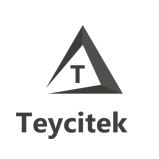
📄 Just came across an intriguing document titled “Teams of LLM Agents can Exploit Zero-Day Vulnerabilities” that dives deep into the abilities of large language model (LLM) agents in the field of cybersecurity. Here’s a detailed summary:
The document titled “Teams of LLM Agents can Exploit Zero-Day Vulnerabilities” explores the capabilities of large language model (LLM) agents in the realm of cybersecurity, specifically focusing on their ability to exploit zero-day vulnerabilities. Here is a detailed summary:
Abstract and Introduction
The paper highlights the increasing sophistication of LLM agents in cybersecurity, noting their ability to exploit known vulnerabilities but their struggles with zero-day vulnerabilities. To address this, the authors introduce HPTSA (Hierarchical Planning and Task-Specific Agents), a system where a planning agent coordinates subagents to handle different tasks, improving long-term planning and exploration of vulnerabilities(Fang et al., 2024).
HPTSA Framework

HPTSA consists of three main components:
- Hierarchical Planner: Explores the environment and determines which vulnerabilities to target.
- Team Manager: Decides which task-specific agents to deploy based on the planner’s instructions.
- Task-Specific Agents: Specialized agents designed to exploit specific types of vulnerabilities such as SQL injection (SQLi), Cross-Site Scripting (XSS), and Cross-Site Request Forgery (CSRF)(Fang et al., 2024).
Benchmark and Evaluation
The authors developed a benchmark of 15 real-world zero-day vulnerabilities to test HPTSA. These vulnerabilities were chosen based on their reproducibility and severity, ensuring they were not part of the training data for the LLM used (GPT-4)(Fang et al., 2024). HPTSA was evaluated against other agents and open-source vulnerability scanners, showing significant improvements in performance. HPTSA achieved a pass at 5 of 53% and a pass at 1 of 33.3%, outperforming other methods by up to 4.5 times(Fang et al., 2024).

Case Studies and Limitations
The paper includes case studies demonstrating successful and unsuccessful attempts to exploit vulnerabilities, highlighting the strengths and weaknesses of HPTSA. For example, HPTSA successfully exploited XSS and CSRF vulnerabilities in flusity-CMS but failed to exploit certain vulnerabilities due to the lack of accessible endpoints or specific routes(Fang et al., 2024).
Cost Analysis
The cost of using HPTSA was analyzed, showing that while the per-run cost is comparable to previous methods, the overall cost per successful exploit is higher. However, the authors anticipate that the cost of using AI agents will decrease over time, potentially making them more cost-effective than human penetration testers(Fang et al., 2024).
Related Work and Conclusions
The paper situates its contributions within the broader context of AI and cybersecurity research, noting that while previous work has shown the potential of AI agents in cybersecurity, HPTSA is the first to demonstrate effective exploitation of zero-day vulnerabilities using a multi-agent system(Fang et al., 2024). The authors conclude that AI agents will likely play an increasing role in both offensive and defensive cybersecurity, though further research is needed to fully understand their implications(Fang et al., 2024).
Acknowledgements and References
The research was funded in part by the Open Philanthropy project, and the paper includes a comprehensive list of references to related work in the fields of AI and cybersecurity(Fang et al., 2024).
This summary encapsulates the key points and findings of the document, providing a comprehensive overview of the research and its implications.
#Cybersecurity #AI #LLMAgents #ZeroDayVulnerabilities #Research
Feel free to share your thoughts or insights on this!
